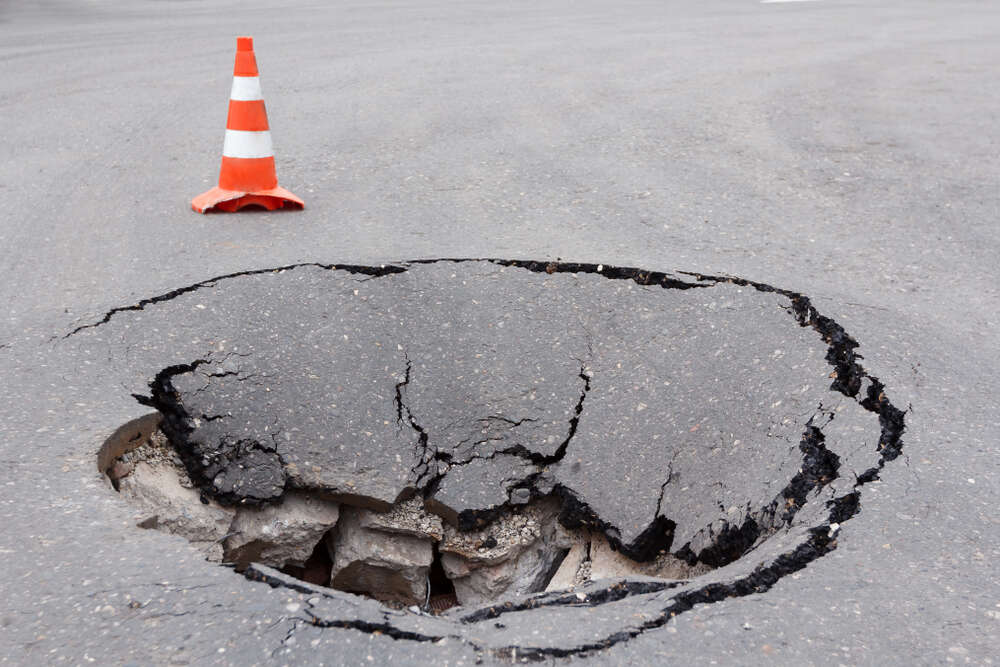

- Infrastructure investors could face more than 50% portfolio value loss in a runaway climate change scenario.
- The average net asset value loss in the current policies scenario is 4.4%.
- Investors need to determine the value of the extreme climate risks they are exposed to and manage these risks actively.
New research by the EDHEC Infrastructure and Private Assets Institute shows that the physical risks created by climate change are not limited to a distant future for investors in infrastructure. Some could lose more than 50% of the value of their portfolio to physical climate risk before 2050 in the event of runaway climate change. Moreover, the average investor will also lose twice as much to extreme weather, mostly in OECD countries, compared to a low carbon scenario.
The numbers are significant: over the past two decades, institutional investors have increasingly allocated capital to private, mostly unlisted, infrastructure companies like toll roads, airports, power plants and pipelines. Our indexing and valuation platform infraMetrics tracks a universe representing approximately $4.1trn of enterprise value and $2.2trn of market capitalisation at current market prices in 25 key markets.
Floods and storms are the most common types of climate-related events, but extreme temperature events are also on the rise as global warming increases their frequency and intensity. If climate change speeds up, these trends are also forecast to become more frequent and more severe. Using a very granular database of asset-level physical risk estimates and financial data, we find that the impact of runaway climate change on the value of infrastructure investments before 2050 is significant. We also find that if no serious measures are taken, financial losses from physical risk (which are never zero) would be twice as high as in a low carbon scenario, for all investors.
In this paper, we describe our approach to measuring baseline physical risks (today) and how physical risks would materialise from that baseline in different climate scenarios in terms of their impact on cash flows and discount rates at the asset level. We also look at how physical risks, despite being asset specific, are not easily diversified for most investors, some of whom could have a high concentration of such risks in their portfolios.
Massive losses
Our research shows that the cost of physical risks within the current policies scenario represents, on average, 4.4% of the total net asset value (NAV) of the assets in our reference database by 2050. The average maximum loss is -27% and we see that the effect of extreme climate events is negative across all sectors, impacting the NAV of transport (-10% on average with a maximum of -97%) and the energy and water resources sector (-7% on average, with a maximum of -40%).
Moreover, most investors in infrastructure hold a few individual assets and therefore have potentially high concentration in physical risks. Investors who hold direct stakes in infrastructure assets, be they fund managers or asset owners, usually have fewer than 20 investments. The average asset owner typically has fewer than ten direct stakes.
Using asset-level loss estimates for more than 700 infrastructure companies in different climate scenarios, we build thousands of random portfolios with between five and 20 assets and stack the climate losses by 2050.
While lucky investors can find themselves with limited to no climate-related losses by 2050, many are not so lucky and the unluckiest face large losses, especially if they are not diversified across many assets.
As such, when an investor finds themselves exposed to the riskiest assets in the same portfolio, maximum losses for those investors exposed to a few of the riskier assets can mount to -27% in the orderly transition scenario and to -54% in a hot house scenario.
2050 is still 30 years away and past the investment horizon of investment funds, but many are now exposed to much longer-term investments. Moreover, the next generation of funds will pick up the same assets.
Material risks
Climate change risks are already material for a number of investors in infrastructure assets even if these are located in developed economies. This challenges the intuition of many investors that these risks would impact first and foremost the poorer populations of the global south. Instead, the reverse is true: more value will be destroyed in places where more valuable assets exist.
It should also be noted that our loss estimates can be considered conservative in light of the very limited impact of physical risk on the economy implied by the scenario used by the Network for Greening of the Financial System (NGFS), a group of central banks and supervisors. Newer scenarios showing a too-little-too-late scenario, by which emissions keep rising and climate change happens faster, will show an even more rapid decrease in the value of infrastructure assets due to their loss of future revenues, itself the result of a less active economy, mostly due to chronic heat.
This focus on the materiality of the physical risks allows climate risk to be seen not solely as the result of a public policy decision but as a reality that, without action from all stakeholders, including governments, will have a very significant impact on the value of investments. Investors considering these questions must now determine what the value of the extreme climate risks they are exposed to amount to, and manage these risks actively.
*joint work with Bertrand Jayles, Qinyu Goh, Abhishek Gupta and Darwin Marcelo – EDHEC Infrastructure & Private Assets Research Institute. Frederic Blanc-Brude is also chief executive of Scientific Infra & Private Assets Ltd, a data provider.
[Read more: Infrastructure remains key for the energy transition]





